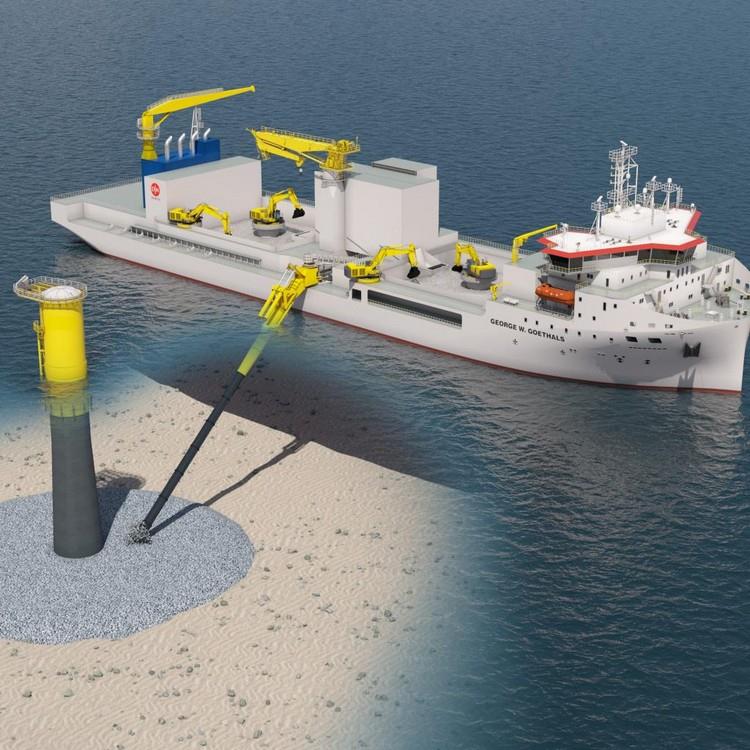There is a growing global demand for the protection of subsea infrastructure that supports the production and transmission of energy and data. To meet that demand, Jan De Nul orders a new dedicated vessel for subsea protection: the George W. Goethals.

Thousands of kilometres of subsea cables lie on the ocean floor, transporting electricity between countries, connecting offshore wind farms to the mainland, and carrying the bulk of international data traffic. But they are vulnerable to damage and, due to their strategic importance, potential targets for sabotage. With a new state-of-the art rock installation vessel, Jan De Nul is taking action to enhance the protection of this critical infrastructure.
The new vessel, named George W. Goethals, will primarily focus on projects in the energy sector. With numerous energy projects under development in the North Sea and Southeast Asia, these regions will form the core of her operational activity. The vessel has a capacity of up to 37,000 tonnes. With a state-of-the-art flexible vertical fall pipe and an inclined fall pipe system, she can install extra-large rocks to water depths of up to 400 meters.
The George W. Goethals will become the third rock installation vessel above 30,000 tonnes in the fleet of Jan De Nul. Designed entirely in-house, the vessel reflects the company’s vast experience in protecting offshore infrastructure.
Philippe Hutse, Directeur Offshore Energy at Jan De Nul, said: 'Decades of hands-on experience have given us deep expertise in subsea rock installation. We have applied this knowledge throughout the vessel’s design. The collective capacity of our subsea rock installation fleet now surges beyond 100,000 tonnes. This investment will strengthen our leading position in the industry.'
Source: JAN DE NUL










